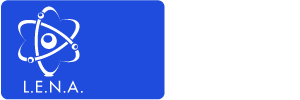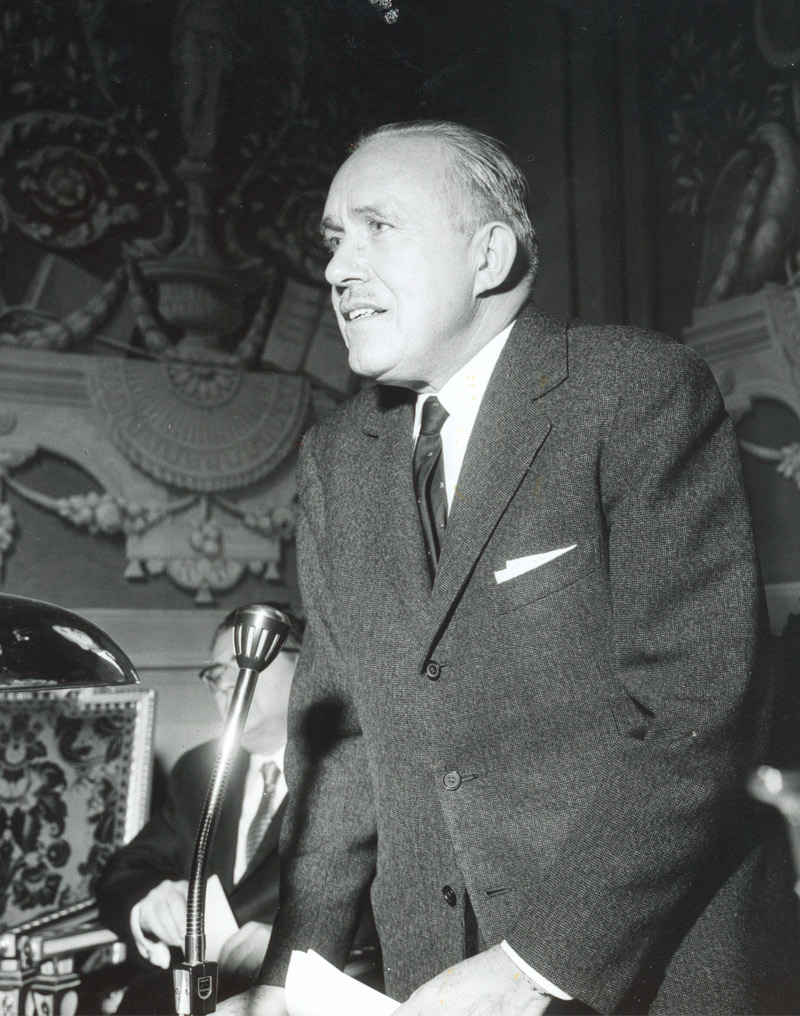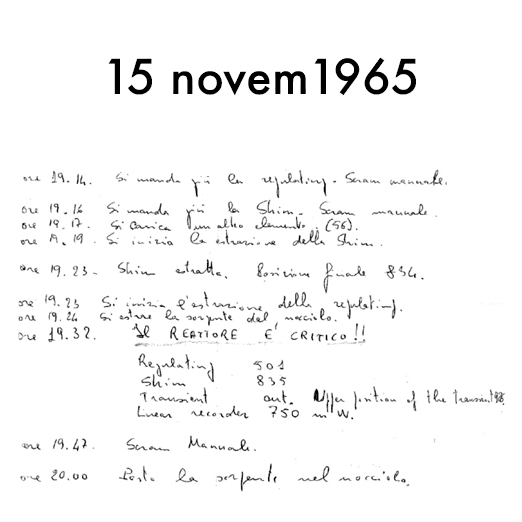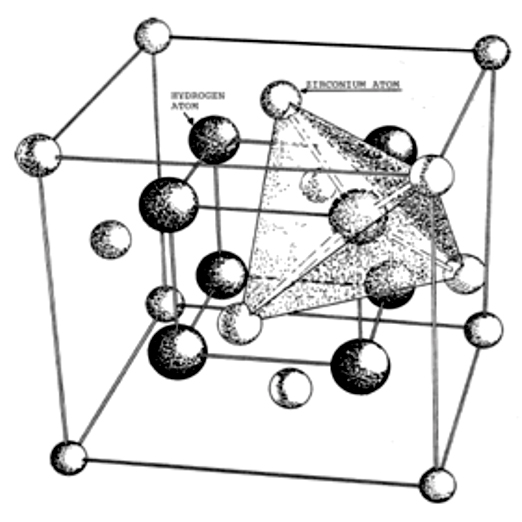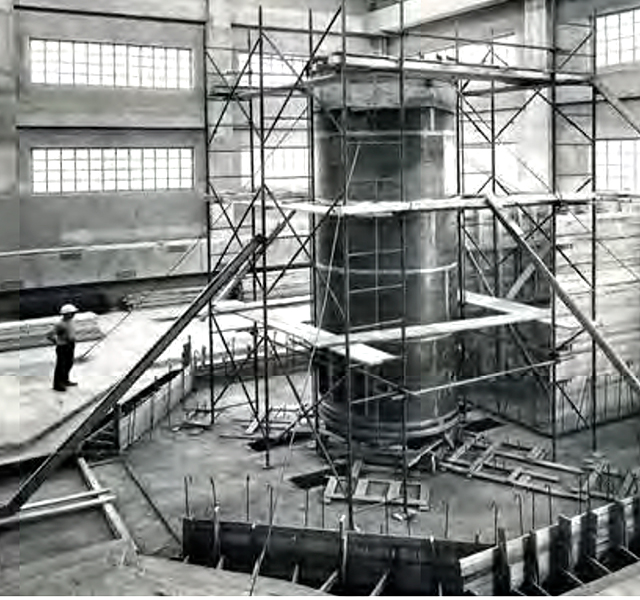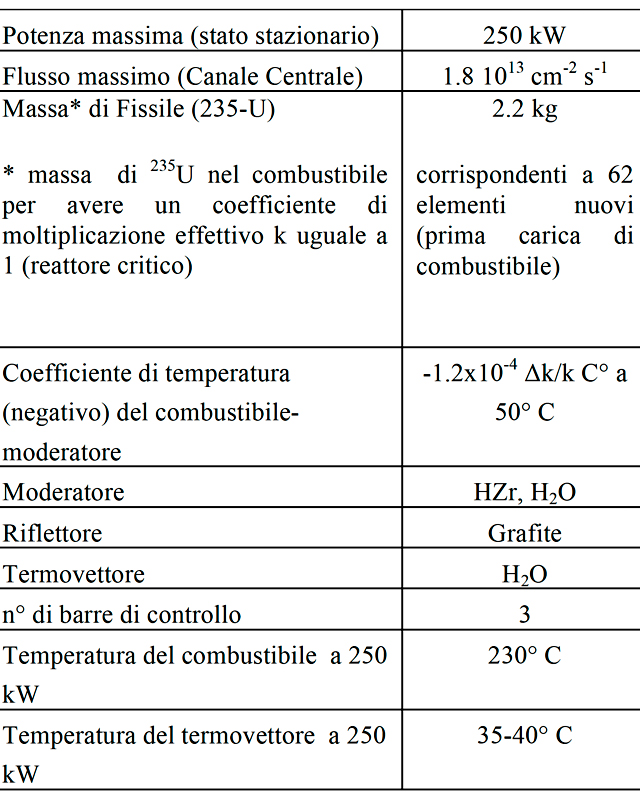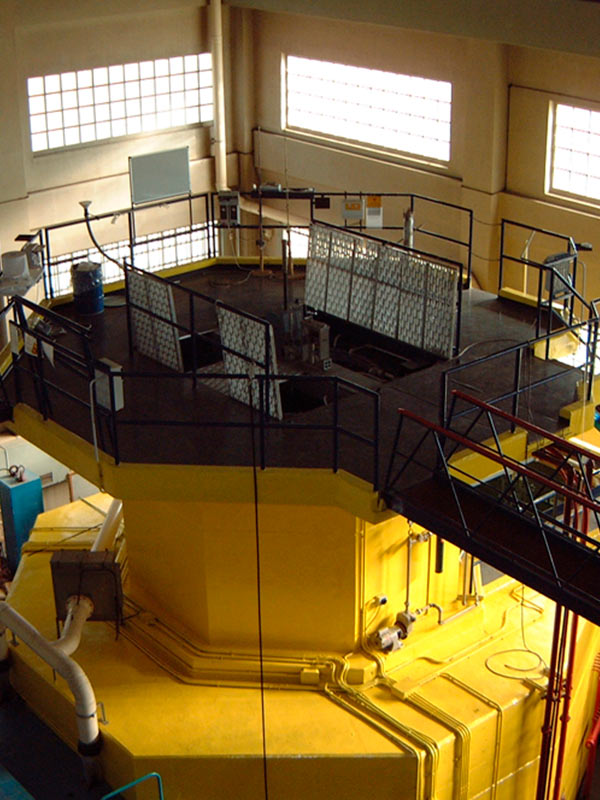UNIVERSITY OF PAVIA
The Reactor
triga mark ii
APPLIED NUCLEAR ENERGY LABORATORY
TRIGA® (Training, Research, Isotopes production, General Atomics)
HALF A CENTURY OF LIFE OF THE TRIGA MARK II REACTOR AND OF SCIENTIFIC AND TEACHING ACTIVITY OF THE APPLIED NUCLEAR ENERGY LABORATORY (LENA) OF THE UNIVERSITY OF PAVIA
D.Alloni, M.Prata, G.Magrotti, A.Salvini
The birth of the Applied Nuclear Energy Laboratory(LENA)
At the end of the 1950s, the University of Pavia could count on one of the most prepared and avant-garde radiochemistry research groups on the national and international scene. This group, led by prof. Mario Rollier, installed in the Radiochemistry Area of the Department of General Chemistry, a subcritical nuclear complex (SM ), equipped with a series of hot cells for the manipulation of low and medium activity alpha-emitting radioisotopes.
With this instrumentation they conducted research of international interest, but it was soon realized that the fluxes of the SM neutron field were too low ( 104 – 105 n / cm2 s) to allow the further step forward of the research activities. Then the need and idea arose to equip the University of Pavia with a machine capable of higher neutron fluxes, of interest not only in the radiochemistry sector, but also in nuclear physics, radioisotope production and materials testing.
In December 1962, the then Rector prof. Luigi de Caro, signed the contract for the purchase of a TRIGA Mark II research reactor of rated steady-state power of 250 kW with the supplier company General Atomic of San Diego, California. Following the signing of the purchase contract, the Rector proposed the creation of the Applied Nuclear Energy Laboratory. The establishment of LENA was made possible by the close collaboration of the professors of the Faculties of Sciences, on which it will depend under the scientific profile, while maintaining the independent character of a Service Center. The laboratory was built on the land adjacent to the Departments of Physics, Chemistry and Chemistry-Physics, the main ones interested in the use of the reactor.
An underground pneumatic post system connected the LENA radiochemistry laboratories with the hot handling cells of the SM Radiochemistry Area, an umbilical cord that immediately underlined the close synergy between the center and the departments. Since its inception, the peculiar feature of LENA was to manage the equipment that constituted its equipment, in particular the TRIGA research reactor, organizing its operation so that it could constitute a tool for research, study and application to request from the University of Pavia institutes, but also from other public and private research bodies. In July 1963 the first report was completed, containing a careful analysis of the environmental factors of the place where the reactor was to be installed, which was sent to the control body CNEN (National Committee for Nuclear Energy).
In October 1963 , General Atomic proposed that the TRIGA of Pavia could also be used in a pulsed way. The surcharge necessary to have this mode of operation was obtained by the CAMEN (Center for Military Applications of Nuclear Energy), an institution dependent on the Ministry of Defense, interested in using the reactor in this mode of operation. In the same month the detailed program of nuclear tests was drawn up, subsequently approved by CNEN. In November 1963 work began for the construction of the building and in the first months of 1964 the drafting of the Final Safety Report, containing a detailed description of the auxiliary systems and an analysis of the risks deriving from the exercise of the rector. In its final form, the report was sent to CNEN in July 1964.
In November 1964 work began on the construction of the biological screen and the assembly of the mechanical parts. On 20 and 28 October 1965, the nuclear fuel arrived in Pavia in two separate loads. In early November, the CNEN authorized the loading of nuclear fuel into the core. The loading of the fuel began on the morning of Monday 15 November 1965 and the first criticality was reached at 19:32, at the power of 0.75 kW. Only a few days later, on 20 November 1965 the reactor reached the maximum power of 250 kW in steady state. . In Pavia the Cherenkov torch of light had just been lit which still, almost 50 years later, illuminates the core of the TRIGA at any criticality exceeding 100 kW, and, in its small way, Italian nuclear. [ Leggi tutto…. ]
Section of the TRIGA Mark II core
The fuel elements, reflector, rotating sample holder and graphite from the thermal column and one of the horizontal channels are visible.
triga mark ii
Operational data
The reactor operated at the maximum power of 250 kW for a total of about 35.000 hours in the period from 1965 to today (with a total of 686 pulses at 250 MW carried out up to the mid- 80s) and the calculated consumption of 235U was in the 49 years of operation equal to about 370 grams. A total of more than 12.000 irradiations were performed. Table 2 shows, by way of example, the main operational data of the TRIGA of Pavia in the last three years ( 2011 – 2013 ). It is important to underline that the lower number of days of reactor operation in some years is due to scheduled maintenance or particular operations related to the construction of experimental facilities that require the reactor to remain in shutdown conditions for days or even a few weeks. On the contrary, years with a greater number of operating hours coincide with the start of new experiments that require, for example, long periods of irradiation or measurements of neutron fields. Almost 50 years after the first critical issue, these data represent an excellent result in terms of use when compared to similar systems installed internationally (source IAEA RR database, [ fonte IAEA RR ]
facilitiy irradiation
The LENA reactor is currently the most important and most used irradiation equipment for carrying out research and service activities; however, the Center also has other sources of radiation and equipment, including: an industrial X-ray generator Gilardoni® of 350 kV/6 mA and 250 kV/12 mA, a Cobalt-60 da 180Gy/h (activity 5.6 x 1012 Bq source at 31 december 2013) and a cyclotron from 18 MeV-80 μA of protons for the production of radioisotopes for medical use.
Implementation of an integrated management system
In order to continuously improve the safety of the reactor and the quality of the management of the processes and services provided, LENA has decided to implement an integrated management system in compliance with both the IAEA GS-R-3 safety standard (Safety Standard – The management system for facilities and activities, 2006)and with the ISO 9001 system (certified since 2010), for the supply of irradiation services and nuclear measurements. The implementation of the integrated management system was also chosen, as a case study, by the IAEA, and presented in the document IAEA SAFETY REPORTS SERIES No. 75 “Implementation of a management system for operating organizations of research reactors”, 2013.
Analisi per Attivazione Neutronica (NAA)
Sin dalla sua nascita, il LENA esegue Analisi per Attivazione Neutronica (NAA) [7]. Le analisi vengono eseguite con il metodo NAA, che permette il raggiungimento di una elevata sensibilità strumentale relativa con tempo di irraggiamento rapido. La tecnica è utilizzata come strumento in vari settori di ricerca e sviluppo, per esempio come prova e la caratterizzazione dei materiali [8], lo studio dei processi industriali nel settore siderurgico [9] e altri settori. Presso il LENA, la tecnica NAA ha trovato anche applicazioni in scienza forense (analisi dei guanti di paraffina), in campo alimentare (analisi del Grana Padano e del Brunello di Montalcino) e storico, quale la ricerca di tracce di veleno nei capelli di Napoleone.
how to reach us
Laboratorio Energia Nucleare Applicata
Aselli street 41, 27100 – Pavia
phone:+39 0382 987 300
fax: +39 0382 987 302
mail: info.lena@unipv.it
segretery: lenasegr@unipv.it
Pec: amministrazione-centrale@certunipv.it
From the A7 Milan-Genoa motorway:
Bereguardo-Pavia Nord exit, continue on the A53 Bereguardo-Pavia junction and then on the Pavia bypass towards Pavia Nord (hospitals exit).
From the A Torino Piacenza motorway:
Casteggio-Casatisma exit, continue on Strada Statale dei Giovi SS35 and take the Pavia bypass towards Pavia Nord (hospitals exit).
On the train:
from Pavia station take bus n°6 and get off at the stop in via Aselli (Golgi college area)
